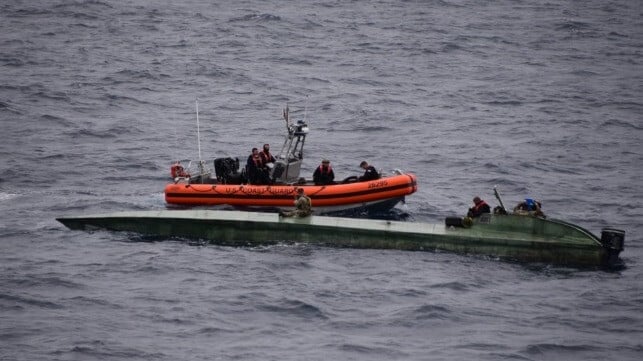GAO: Breakdowns, Manning Issues Cut Into Coast Guard's Anti-Drug Ops

The Government Accountability Office (GAO) says that large quantities of illegal drugs continue to flow into the U.S because of challenges that make it harder for the U.S Coast Guard (USCG) to carry out one its core mandates, countering illicit maritime drug smuggling.
In a new report, GAO says that the USCG has not met its annual drug interdiction mission performance target in any of the past 10 fiscal years. In the 2023 fiscal year, the agency intercepted more than 212,000 pounds of cocaine and 54,000 pounds of marijuana.
While the U.S. government has identified illicit drugs and criminal smuggling organizations as significant threats, challenges in asset readiness and availability, acquisition and workforce shortages are making it hard for the USCG to deal with the narcotics menace.
The USCG relies on its medium endurance cutters for its drug interdiction mission, but the aging vessels have in recent years been unable to meet operational availability targets because of declining physical condition. The Coast Guard's aircraft face a similar predicament. Over the period from 2018 through 2022, they could not meet agency's 71 percent availability target.
The USCG has proposed plans to replace the aging fleet of short-range helicopters with a medium-range fleet. However, the implementation of the modernization program has challenges because of questions over how the medium-range helicopters will interact with the current fleet of cutters for drug interdiction operations.
GAO says that the USCG’s declining asset readiness is exacerbated by persistent challenges in its planned $40 billion acquisition programs to modernize its vessels and aircraft. While the agency is implementing plans to replace the medium endurance cutters with new offshore patrol cutters, acquisition delays are expected to create operational capability gaps through at least 2039. Delivery of the first offshore patrol cutter is already behind schedule by four years and will now occur in 2025.
GAO has also raised concerns over the agency’s budget decisions, which have prioritized acquisitions. In particular, GAO claims that the Coast Guard has made short-term budget decisions that obscure the tradeoffs needed to balance the long-term affordability of its asset portfolio.
Another key challenge is a serious workforce shortage. Since October last year, the agency has reported a nearly 10 percent shortfall in its enlisted personnel due in part to having missed recruiting targets in recent years, the ripple effect of which is reduction in operational activities. Because of manning shortfalls, the agency has been forced to take several cutters out of active service, including three medium endurance cutters, the mainstay of its drug interdiction efforts.
“The Coast Guard’s challenge of balancing its varied mission priorities has grown as it is called on to do more with its limited resources. In this way, it is critical for the Coast Guard to address the longstanding challenges facing its drug interdiction mission, including better managing its acquisition efforts to replace aging assets and infrastructure and assessing its workforce needs,” stated GAO.
